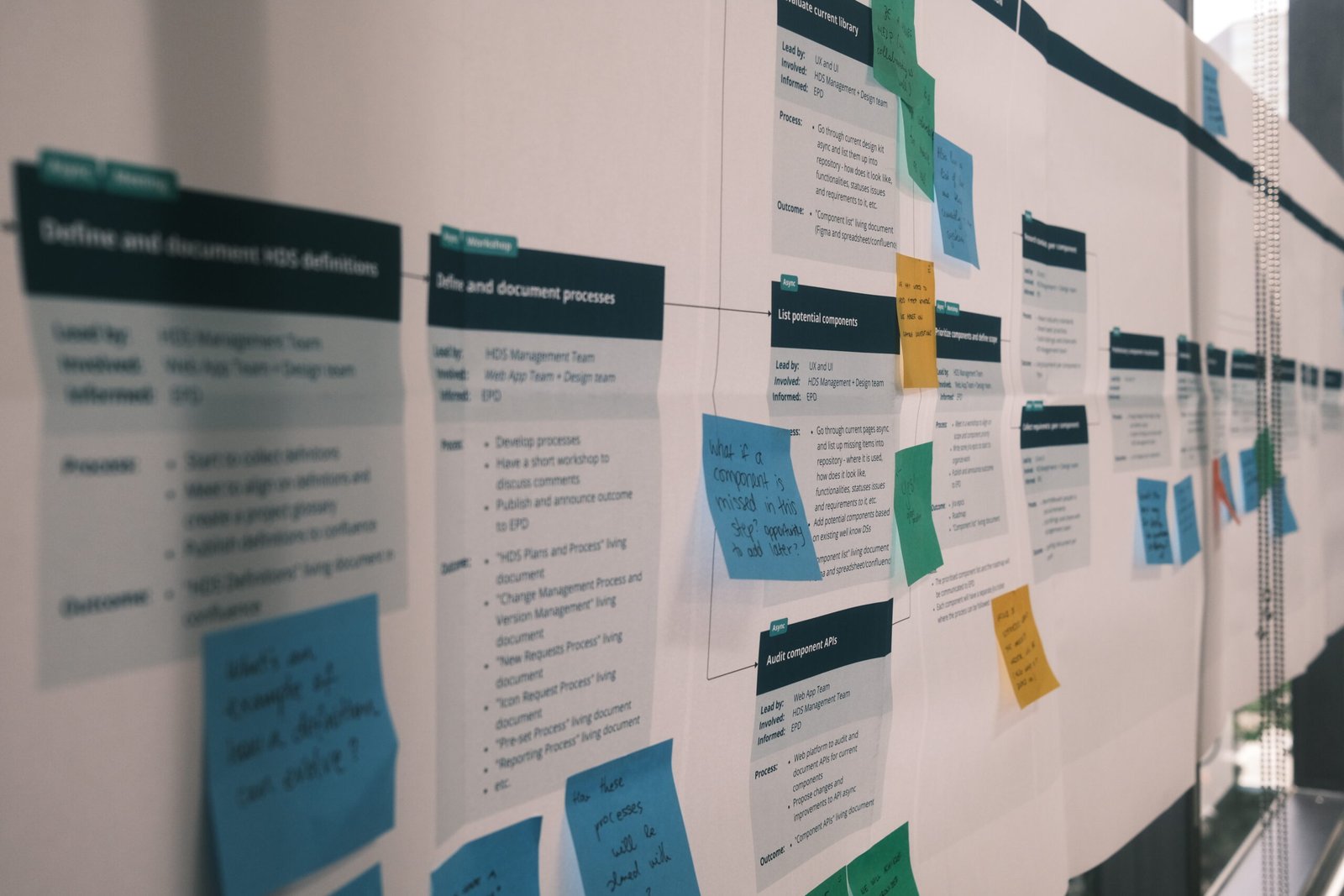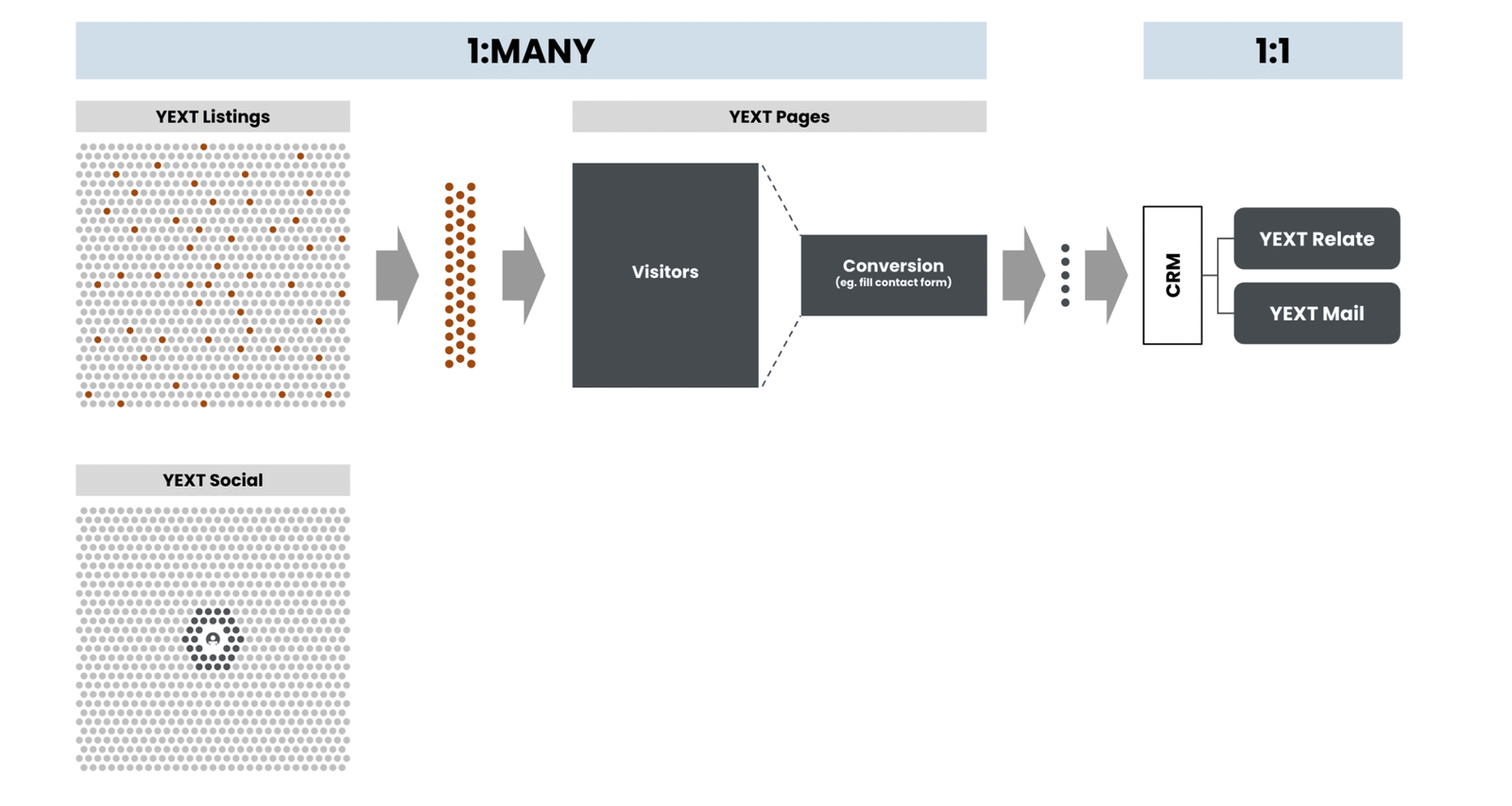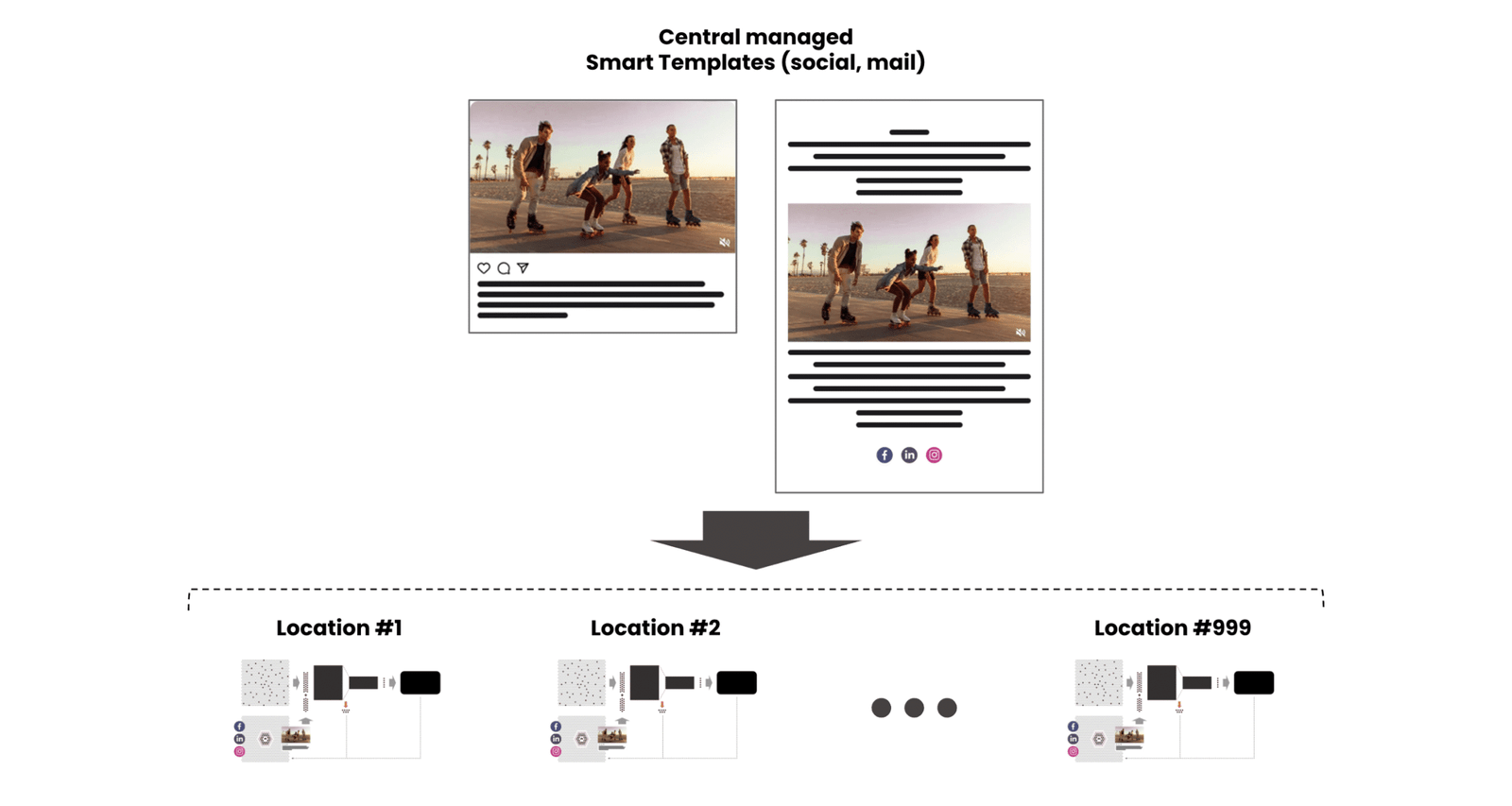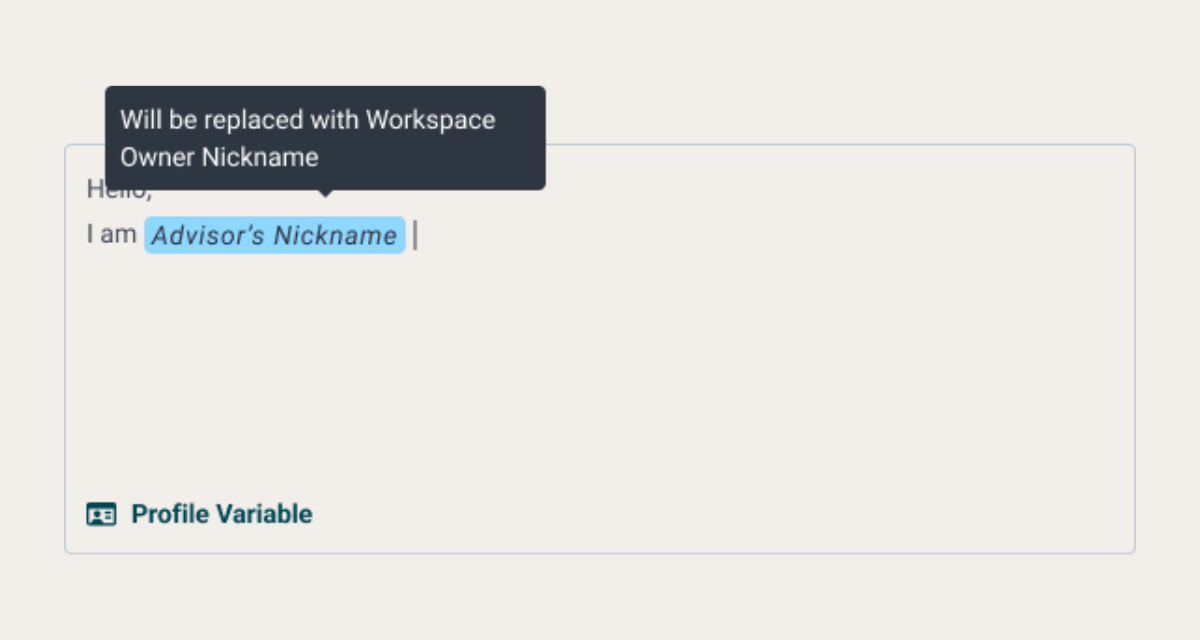Conversion Flow
Strategy
Summary: This project taught me that I choose a career where I can never get bored. The Conversion Flow was a strategic initiative to transform Yext’s product philosophy from simply managing a digital presence to actively driving business outcomes. The goal was to bridge a critical gap in our platform’s conversion funnel, connecting a vast one to many audience to meaningful 1:1 customer relationships. By re-envisioning how our products like Yext Listings, Yext Social, and Yext Pages, worked together. We aimed to deliver a seamless flow that would generate and track tangible leads for our clients.
My Role: As a product designer, my role was to help define the strategic concept and translate it into a clear, actionable plan.
Team: I worked directly with my manager to shape the high-level strategy and collaborated closely with the core social team’s Product Manager and Engineering Manager. This EPD team was responsible for the end-to-end execution of this vision.
The Problem
In the modern digital landscape, businesses face a constant challenge: how to effectively convert a vast, anonymous audience into tangible leads and paying customers?
At Yext, our platform excelled at creating a powerful one to many presence, pushing content to countless listings, search engines, and social media channels. However, a critical gap existed in our product. The conversion funnel was disconnected. We could attract visitors to a client’s online assets, but the journey from “visitor” to “lead” was often lost. This was more than a technical problem, it was a fundamental roadblock to proving our value and, in turn, to our clients’ success.
A portion of our user base, whom we’ve termed “non-believers”, expressed deep disappointment, feeling that their efforts only resulted in “hopes and dreams posts” rather than new clients. We needed to bridge the gap between our powerful one to many presence and the personal 1:1 relationships that drive business.

Without a direct, integrated pathway for conversion, we faced a two-fold problem:
- Untraceable value: We could not clearly demonstrate a direct link between our platform’s activity and a client’s business growth.
- Leaky funnel: The lack of a streamlined conversion process meant potential customers who were interested in a service could easily get lost or choose a competitor who was easier to contact.
Architecting a Seamless Conversion Experience
My team and I tackled this challenge by developing a strategic concept to re-envision the conversion funnel. My role was to define this new vision, connect the dots between our existing products, and design a seamless flow that would lead to a tangible business outcome. I began by visually mapping the ideal user journey, starting from the broad audience and narrowing down to a direct, personal interaction. This process was central to our product strategy, moving from a one to many broadcast model to a 1:1 relationship model.
The Discovery Phase
I began by framing the problem around a clear opportunity: to support online conversion by leveraging platforms beyond social media. This approach was supported by a robust set of statistics:
69% of insurance consumers start with a search before scheduling an appointment
68% don’t have a specific company in mind
Landing pages in finance/insurance can convert at 7.9% vs <1% on general website
Based on the findings, the journey begins with a potential customer discovering a client’s business through Yext Listings, and decide to visit a website (Yext Pages product). Once a conversion occurs (eg. filling a contact form) the lead information is immediately pushed to an integrated CRM. This triggers a personalized 1:1 interaction through Yext Relate or Yext Mail, allowing the client to follow up instantly and begin building a personal relationship.
With the search-to-conversion journey defined, the next design question emerged: how should social platforms fit into this ecosystem?

Strategy – The Relationship Phase
To extend the process, we explored how Yext Social could become an active part of the conversion flow. This meant that not just one, but two products could now drive traffic into Yext Pages, the place where conversion truly happens. For example, an anonymous visitor arriving from a social campaign could be guided into a form submission, transforming into a qualified lead. By refining this workflow, we created a closed loop with traffic generation, conversion, and follow-up. Importantly, it also gave us the ability to measure performance through concrete metrics like CTR, helping clients see the tangible value of their efforts.


How to fill this gap? - Smart Templates
A key part of this strategy was the introduction of Smart Templates. Marketing teams were struggling to balance consistency with personalization. For example: how do you push out a single, cohesive campaign while making it relevant for thousands of individual locations? Smart Templates as a solution, addressed this challenge by enabling centrally managed content that could automatically adapt to local details, like hours, addresses, and links. This way we are not only solved a major scaling problem, but also ensured that every lead captured felt personal, and actionable.


With the strategy defined, I translated it into concrete design work, starting with wireframes. This was a highly cross-functional effort. I collaborated closely with my manager, gathered feedback through design reviews, and conducted quick guerrilla testing to validate early ideas. Each feedback informed rapid iterations, ensuring the solution stayed grounded in user needs,
Implementation required careful coordination across teams. I partnered with two engineering teams and other designers working on related features to align dependencies and maintain consistency. Over several weeks, we refined and delivered the solution, transforming the strategy into a tangible, scalable product experience.
Reflections
This project represented a pivotal shift in Yext’s product philosophy. By meticulously documenting the problem and creating a cohesive, phased strategy, we demonstrated how our platform could deliver genuine, measurable business value for our customers. It was the first time I had to think strategically at a higher level, involving multiple products, moving beyond design execution to focus on the overarching product flow. I had the opportunity to learn directly from my manager and product lead. It reinforced my love for product design by showing me the immense variety of challenges we get to solve in a career opportunity where I can never get bored, and for that, I’m truly grateful.